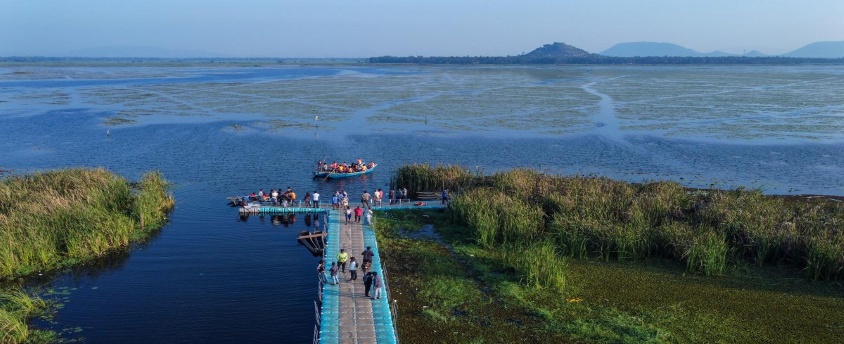India as a Biodiversity Champion
24, Feb 2023

Prelims level : Environment
Mains level : GS-III Environment & Biodiversity |Climatic Change Conservation, Environmental Pollution & Degradation, Eia
Why in News?
- This article discusses various initiatives by India towards biodiversity conservation.
Highlights:
- Biodiversity conservation refers to the protection, management, and restoration of the variety of life on Earth, including all plant and animal species and their habitats. Biodiversity is essential for the healthy functioning of ecosystems, the provision of ecosystem services, and the survival and well-being of human societies.
- India currently hosts 17% of the planet’s human population and 17% of the global area in biodiversity hotspots, placing it at the helm to guide the planet in becoming a biodiversity champion.
- India is facing serious losses of natural assets such as soils, land, water, and biodiversity due to rapid growth in population and its after-effects.
Initiatives towards biodiversity conservation:
- The National Mission for a Green India aims to increase forest cover on degraded lands and protect existing forested lands.
- The National Mission for Himalayan Studies was launched in 2015 to support research and development in the Himalayan region.
- The mission aims to promote sustainable development and conservation of the Himalayan ecosystem.
- India has identified and notified over 160 Biodiversity Heritage Sites, which are areas of ecological, biodiversity, cultural or aesthetic importance. These sites are protected and managed for the conservation of biodiversity and cultural heritage.
- The National Mission on Biodiversity and Human Wellbeing has been approved by the Prime Minister’s Science, Technology, and Innovation Advisory Council (PM-STIAC).
- This mission seeks to harness the power of interdisciplinary knowledge — for greening India and its economy and to position India as a global leader in applied biodiversity science.
- On December 19, 2022, 188 country representatives at the United Nations Biodiversity Conference in Montreal, Canada adopted an agreement to “halt and reverse” biodiversity loss by conserving 30% of the world’s land and 30% of the world’s oceans by 2030, known as the 30×30 pledge.
- In response to this call, the Union Budget 2023 mentioned “Green Growth” as one of the seven priorities or ‘Saptarishis’.
Way Forward:
- Administration shall focus on evidence-based implementation and inclusive monitoring programmes that could result in documentation and distillation of lessons learnt for replication, nationally as well as globally.
- We must focus on reducing water use in agriculture by promoting the adoption of less water-intensive crops and by making investments in water recycling in urban areas using a combination of grey and blue-green infrastructure to maintain ecological flows that will determine the fate of our wetland ecosystems.
- Implementation of the Green India Mission should focus on ecological restoration rather than tree plantation and choose sites where it can contribute to ecological connectivity in landscapes fragmented by linear infrastructure.
- The choice of species and density should be based on knowledge and evidence on resilience under emerging climate change.
- Under the ‘Mangrove Initiative for Shoreline Habitats & Tangible Incomes’ (MISHTI) initiative, site selection should be considered with a greater emphasis on the diversity of mangrove species with retention of the integrity of coastal mud-flats and salt pans themselves.
- Conservation efforts must be inclusive of local and nomadic communities where these initiatives will be implemented.
- Traditional knowledge and practices of these communities should be integrated into the implementation plans.
- The National Mission on Biodiversity and Human Wellbeing shall be launched without much delay to educate and bring awareness to India’s biological wealth.









